3 Essential Components for Science Classroom Management
Imagine walking into a middle school Science classroom and seeing students engaged in their learning. Establishing some key components for science classroom management will ensure a smooth school year.
Disclosure: This post contains some affiliate links for your convenience. As an Amazon Associate I earn from qualifying purchases with no cost to you.
In This Post
Science classroom management is so broad, so I will share my top 3 areas of classroom management that I focus on. The three areas are building a positive and safe classroom community, classroom procedures and routines, and creating engaging lessons and activities. In each focus area, I will give a few strategies that help me manage my large Science classes.
Be sure to get your free guide 7 Daily Must-Do Routines to Run Your Science Classroom Like a Pro today!
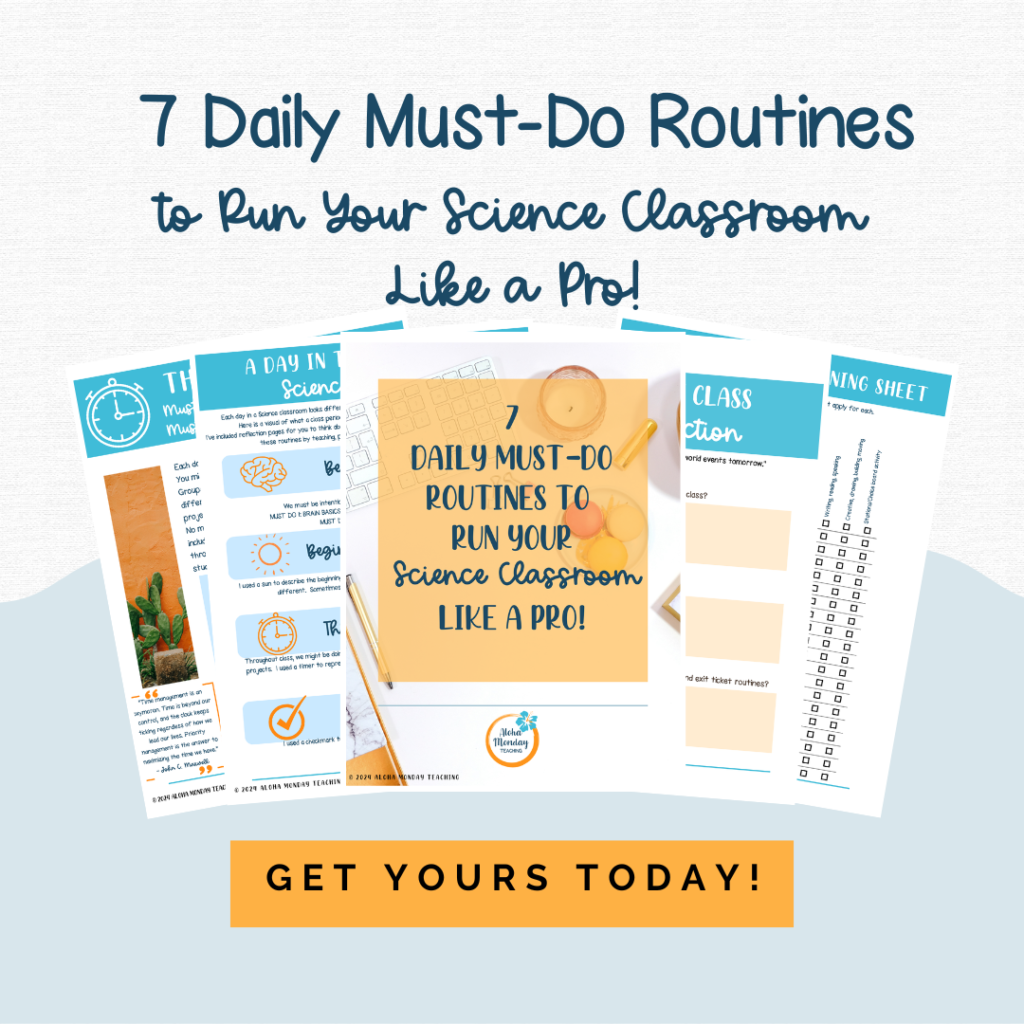
What a Day Looks Like in my Science Classroom
If you’re like me, you are very reflective, hard on yourself, and strive for the best. Some days or class periods are easy, and some are a little more challenging. We must know where we are right now, and know where we want to go, in order to take action.
What does your day usually look like now? What would you like it to look like? Are kids engaged in their learning? Do they know what to do when they need something? There are so many things we have to think about, and be proactive about, for a successful science classroom management plan.
On some days in my science classroom, you will see kids sitting at their desks taking notes, while I am presenting information. Most days, you will see students working either independently, with partners, or with groups on various activities. You will hear students talking to each other or working quietly.
While each day looks and sounds different, there is one thing in common. I set up routines and procedures with my students that covers everything we do in class. Students know the expectations when we are taking notes, doing a lab, or working on projects or choice activities. They know how to walk around the room or where to get supplies. They know what to do when they have questions or want to share their ideas.
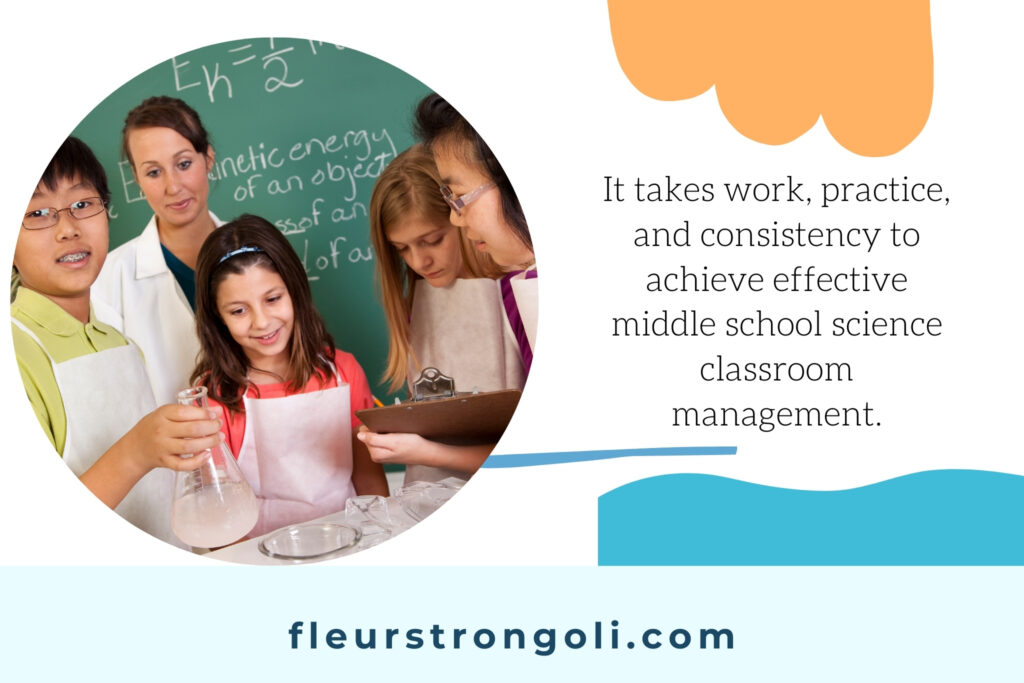
It didn’t look like this on day one or even on day twelve! Not only do we have our easy and tougher days, but we also have our challenging and rewarding class periods too! That is why having plans helps make those days and class periods easier. It takes work, practice, and consistency to achieve effective middle school science classroom management.
What is Science Classroom Management?
As you know, classroom management covers many aspects in the classroom. It is such a broad topic, but essential for learning and teaching. The three areas of classroom management in science class I focus on are building a positive and safe classroom community, establishing routines and procedures, and creating engaging lessons and activities.
What are some classroom management strategies?
There are many strategies and tips when it comes to classroom management. I will share 3-5 strategies for each classroom management focus area in my science classroom.
To help with this all year long, be sure to get the Science Classroom Management Activities Bundle! This includes all you need to start your school year and review procedures throughout the year.
Science Classroom Management Focus Area 1: Building a Positive and Safe Classroom Community
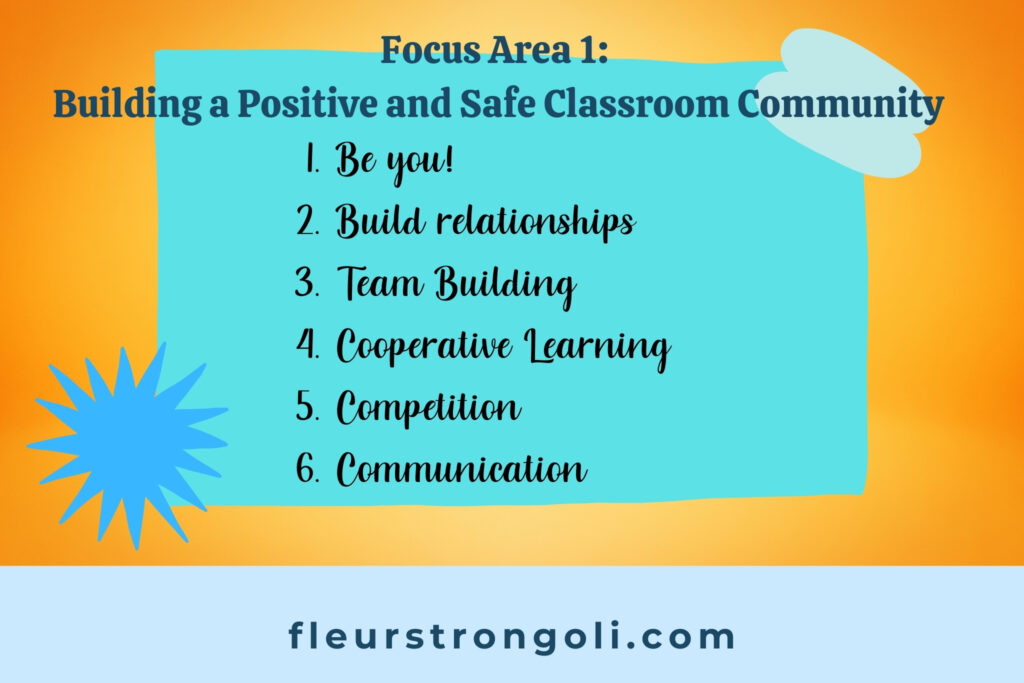
In my opinion, this is one of the most important parts of classroom management. It is so imperative for students to feel safe, trusted, respected, valued, and accepted by you and their peers. It’s especially important for our middle schoolers! They need to know their teacher cares about them, and their peers will be kind and respectful. And when students know this, and like you, they will work harder for you! It’s a win-win!
Strategy 1: Be You! (Add some positive energy too)
You determine how your classroom goes day by day, or hour by hour. It’s so important to be yourself and honest so the kids know who you are. It’s also important to bring positive energy into your classroom each day, even on your hard days. This will set the tone and mood in your classroom, and the kids feed off it.
Teaching online for one year was tough, because I enjoy being around the kids and their energy. But after receiving multiple emails and notes from parents and students with one common message, I realize that I brought positive energy each day- on Zoom! There were many thanks for coming to class with a smile and teaching with excitement. So be sure to bring that smile and excitement to your classroom each day!
And being back in the classroom was so rewarding (and challenging). I made sure to bring positivity and encouragement into my classroom each day.
Strategy 2: Building Relationships
When the students know you, and know that they can trust you, it will be that much easier to build relationships with them. Building relationships begins on day one, and doesn’t end. Simply ask them questions, get to know them, share your stories, and follow through with what you say. Try to understand them. Remember that there are times when our middle schoolers just need us to listen and not give advice. These are some simple ways to build those relationships with your students.
Strategy 3: Team Building and Cooperative Learning
Team building can be a lot of fun, and it can also be stressful for some students. This is why it’s important to have a safe community. Starting off small with little competition is a great way to build relationships between your students. Using cooperative learning strategies is another way to build a safe learning community.
Strategy 4: Competition
Competition can build community in a couple of different ways. Like team building, you can play games to build in natural competition. I like to have each of my classes compete against each other by reaching goals. The “Super Improvers Team” from the book Whole Brain Teaching for Challenging Kids (and the Rest of Your Class Too) is a great strategy for this. Each class sets an academic goal (usually a test average) and a behavior goal. When they reach their goal they earn a star. After earning ten stars, they move up a level and decide on a class reward. This has been one of my most successful strategies in middle school! Kids still talk about it, and they are in high school now.
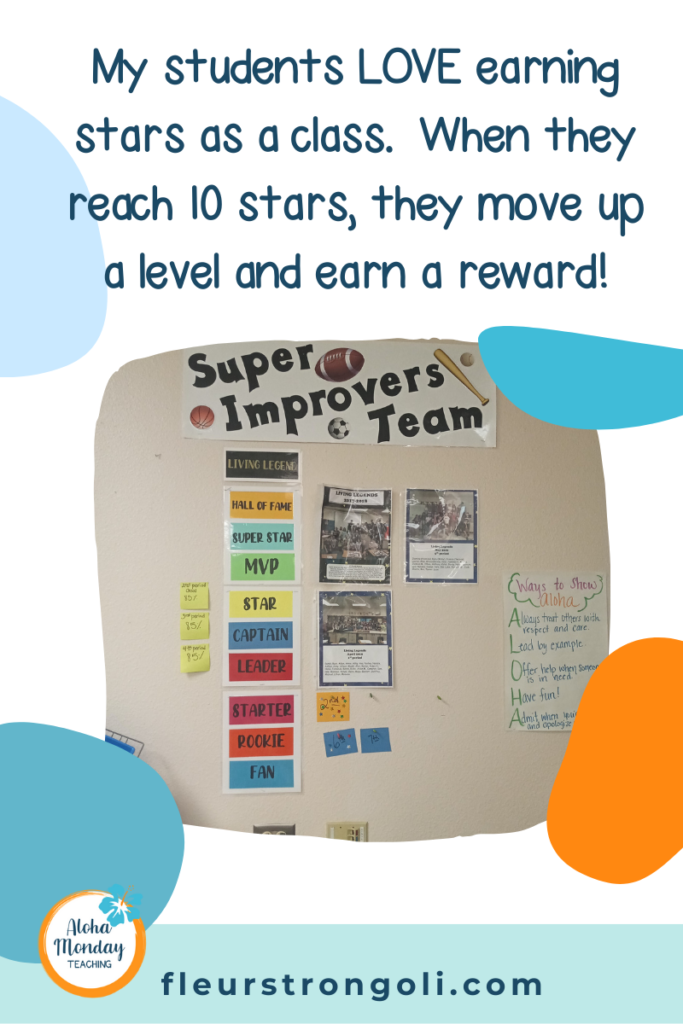
Strategy 5: Communication
I love the parent-teacher partnership! It is one of my most valued relationships. Communicating with them is key. We are used to emailing or calling home when a student does something wrong, but you know what’s even better? Calling or emailing home when they do something well! Parents are so shocked and it makes everything that much better in your classroom.
So, building that positive classroom environment is essential to your science classroom management.
Science Classroom Management Focus Area 2: Classroom Procedures and Routines
This is such a HUGE area of classroom management. I include classroom set-up, routines and procedures, classroom expectations and consequences in this area.
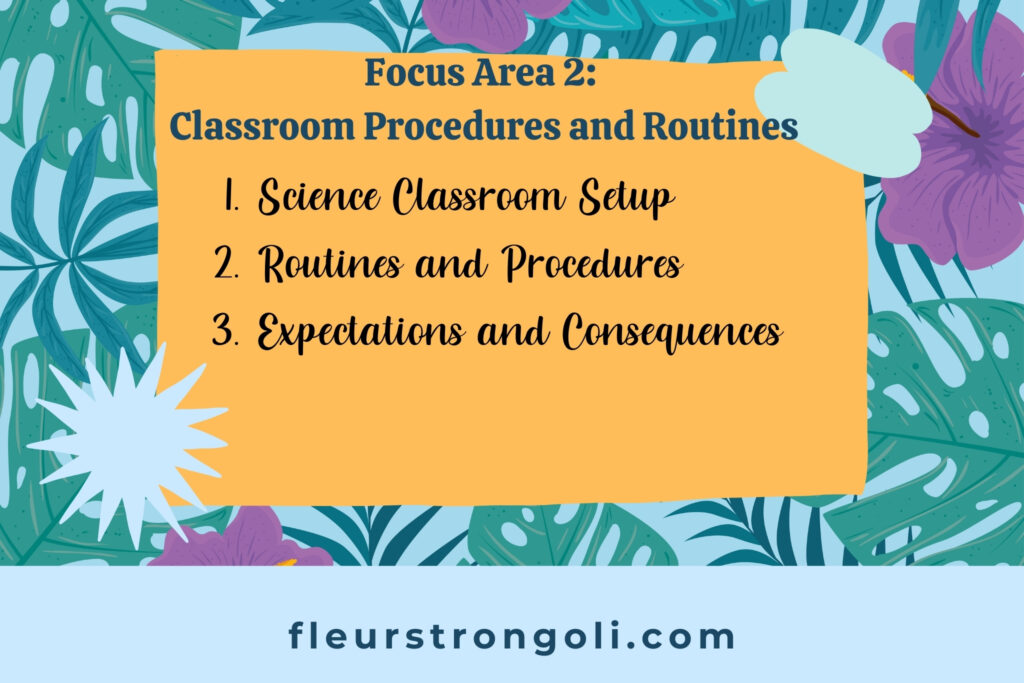
Strategy 1: Science Classroom Set-up
If you have an actual Science classroom with lab stations, you are so fortunate! I’m lucky that I have one. I have student desks and eight lab stations with sinks in my classroom. If you have a traditional classroom, it is still possible to have a great set-up. You just have to be more creative with your space.
When setting up your classroom, think about where students will work independently and with groups or partners. Have a plan to store materials and how students will access them. Desks should be arranged in a way that incorporates your goals for interaction. In my classroom, desks are in rows, but they can easily move them around to form groups.
Read my blog post to set up your science classroom.
Strategy 2: Routines and Procedures
You could literally list every single procedure and routine you want to teach. That’s actually what I do at the beginning of the school year. I think of everything a student would need to do during the day like sharpen a pencil, empty a backpack, turn in work, walk to the other side of the room for something, ask a question, talk to a partner, work on a lab, and so on.
The list is LONG, but it is so important to have a procedure in place for everything! And if something comes up that you didn’t think of- that is okay! Make a routine for it on the spot, or be flexible and honest. Let them know that right now, this is what we’re going to do, but it may change. And when you know the procedures, you have to teach it, practice it, and reinforce it daily for at least 2 weeks. Review it with the students if they forget, aren’t doing the procedure correctly throughout the school year, or if it needs to be adjusted.
Strategy 3: Expectations and Consequences
Some call it classroom rules, but I like to call it expectations. You must be clear on your expectations and consistent. Students can help develop some of these rules or expectations, but most of them should be done by you. It is also helpful for students to understand why you expect certain things. For example, one of my expectations is that students do not leave the room without permission. They know it is a safety rule I have in my classroom.
When it comes to consequences, I teach the students that there are natural occurrences for any type of action. It could be positive or negative. When it comes to behaviors, I have some consequences I use. For example, my small consequences are when students have to sit out of an activity, work with another group or alone, or talk to me in the hallway. My moderate consequences are a phone call or email home, or work during their lunch. My serious consequence is when students go to a different room for a time-out. An office referral is the most serious.
When I have a positive classroom community, set clear expectations, and am consistent, I rarely have to administer moderate or serious consequences.
Read more about setting expectations in your Science classroom in this blog post- How to Establish Science Classroom Expectations for Middle School.
Science Classroom Management Focus Area 3: Creating Engaging Lessons and Activities
This third area is just as large and important as the first two. You are in your Science classroom to teach students what your state standards tell you to teach. To do this effectively, you must create engaging lessons and activities. There are some things to consider when doing this. You must refer to your state standards, your school or district’s adopted material, and then your students. When planning your unit and brainstorming activities, be sure to consider the middle school student’s brain and how they learn, their learning styles, and interests.
Read my blog post How Do I Make Lesson Planning of Science Simple and Focused? to get an overview of lesson planning in Science.
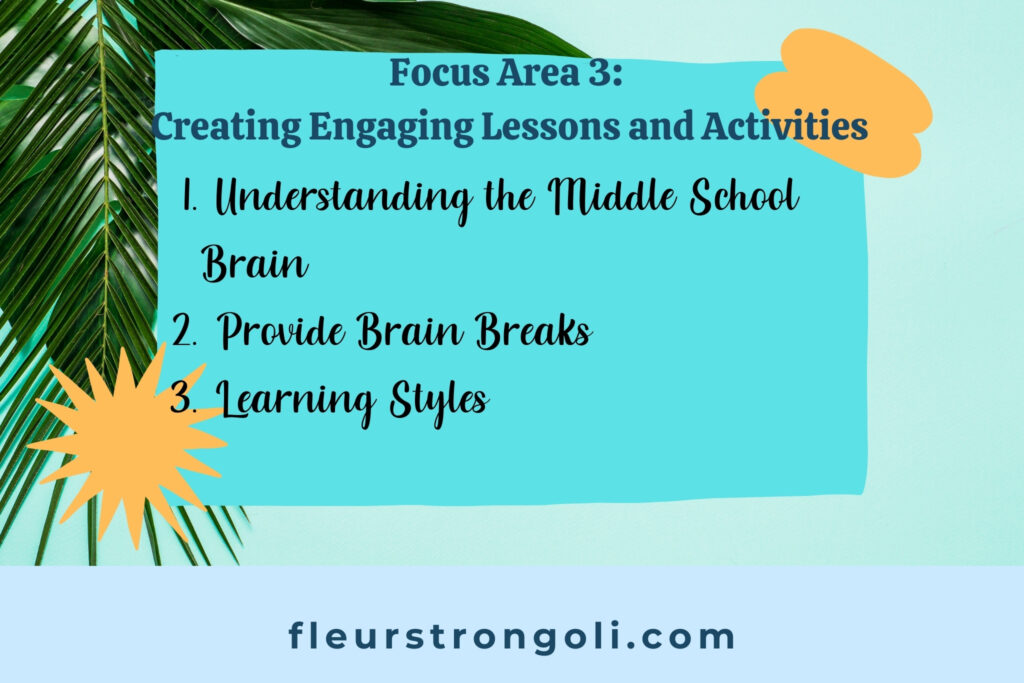
Strategy 1: Understanding the Middle School Brain
This is such an interesting area for me and one that I am continuously learning about to improve learning in my own classroom. The brain is fascinating, and the middle school brain is no exception. It is still developing, hormones fluctuate, and there are different chemical responses that influence behavior and learning. Boys and girls also use parts of their brains differently, which also affects learning.
There is so much research about this, and I would love to do a book study one day with a group of like-minded teachers. You can visit the Gurian Institute to learn more. I recommend reading Strategies for Teaching Boys and Girls Secondary Level and Boys and Girls Learn Differently by Dr. Gurian. These are listed in my Favorite Resources.
Once you learn more about the middle school brain, you can create engaging lessons and activities that will strengthen both brain hemispheres in all children.
Read more on my blog post 3 Important Steps to Engage Students in Lessons for more on the brain and other strategies.
Strategy 2: Provide Brain Breaks
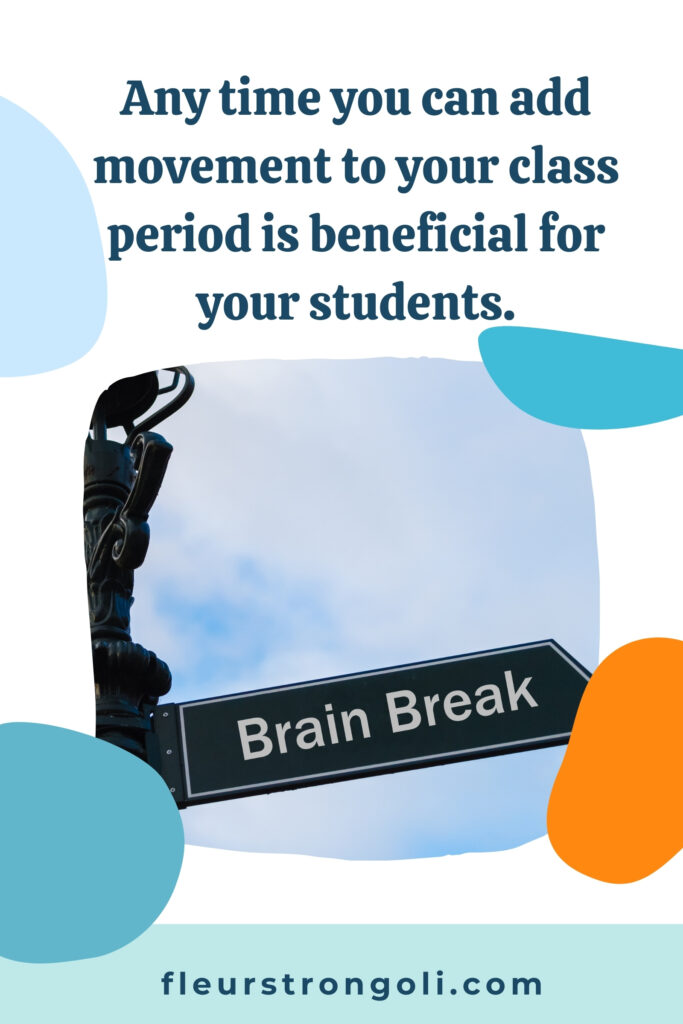
One of my favorite quotes that the team at the Gurian Institute says is, “If the bum is numb, the brain is the same.” This reminds me to add movement to my lessons. It is recommended that middle schoolers get a break to process information every 15-20 minutes. I like to break up a lesson by providing brain breaks and movement.
I love the book, Refocus and Recharge by Responsive Classroom. It gives many ideas for brain breaks in middle school. There are brain breaks to calm or energize the room. Simple brain breaks include breathing exercises, standing up and stretching, standing up to respond to a question, or standing up and “air writing” a vocabulary word. Any time you can add movement to your class period is beneficial for your students.
You can remind yourself to use a brain break by incorporating it into your notes presentation or by having a student choose a brain break. You can use Brain Based Strategies to help you with that! Just insert a slide into your current presentation to include different brain breaks, discussion time, and think time. If you use Pear Deck, they have pre-made slides to remind you. I like to introduce my students to various brain breaks and create a list. I post the list as a visual reminder for me, and to allow students to choose one for that period.
Strategy 3: Learning Styles
Another consideration when planning engaging lessons is to think of your students’ learning styles or preferences and interests. This takes us back to building relationships. Offer options like writing a story, creating a skit, building a model, or creating a poster to increase engagement. Giving them a choice to demonstrate their understanding based on their strengths will allow them to be engaged in their learning.
Wrap Up
Classroom management in the science classroom is achievable and imperative. Just focusing on these three focus areas will make your school year engaging, exciting, and fun!
Your Turn
Share your best classroom management strategies or what you will implement in the comments below or on FB! And be sure to download your free guide 5 Daily Must-Do Routines to Run Your Science Classroom Like a Pro.
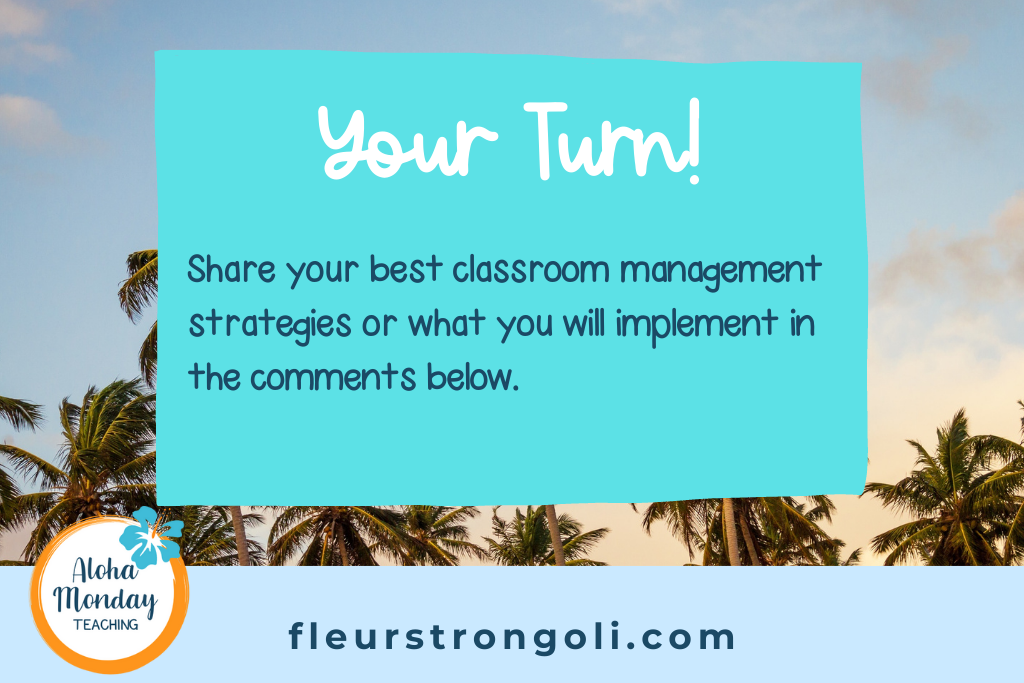
Resources You Might Like
Science Classroom Management Activities Ultimate Bundle
Read More
These are the blog posts mentioned to help you run your Science classroom like a pro.
3 Important Steps to Engage Students in Lessons
2 Simple Steps for an Effective Science Classroom Setup
How to Establish Science Classroom Expectations for Middle School
How Do I Make Lesson Planning of Science Simple and Focused?
Here are some blog posts by my teacher friends that you will find helpful, no matter what you teach!
5 Tips for Substitute Success in the Art Room – Kristina Toolan gives excellent tips when you are away from any classroom.
Laura from Total Timesavers shares Eight Ways to Streamline Your Grade Level Google Classrooms for Maximum Efficiency.
Cooking in the Classroom: How to Cook with Students by Kristin at Growing Global Citizens shares ideas for cooking and setting expectations for any subject.
Angela gives insight into co-teaching and collaborating with her Top 3 Tips for Co-Teaching Success between Teachers and School Librarians.
Nail French Syllabus Day in 3 Easy Steps by Cindy from Balade French Resources will help when you are creating your course syllabus.
If you’ve wanted to write a blog, be sure to read 7 Helpful Tips on How to Blog Like a Boss.

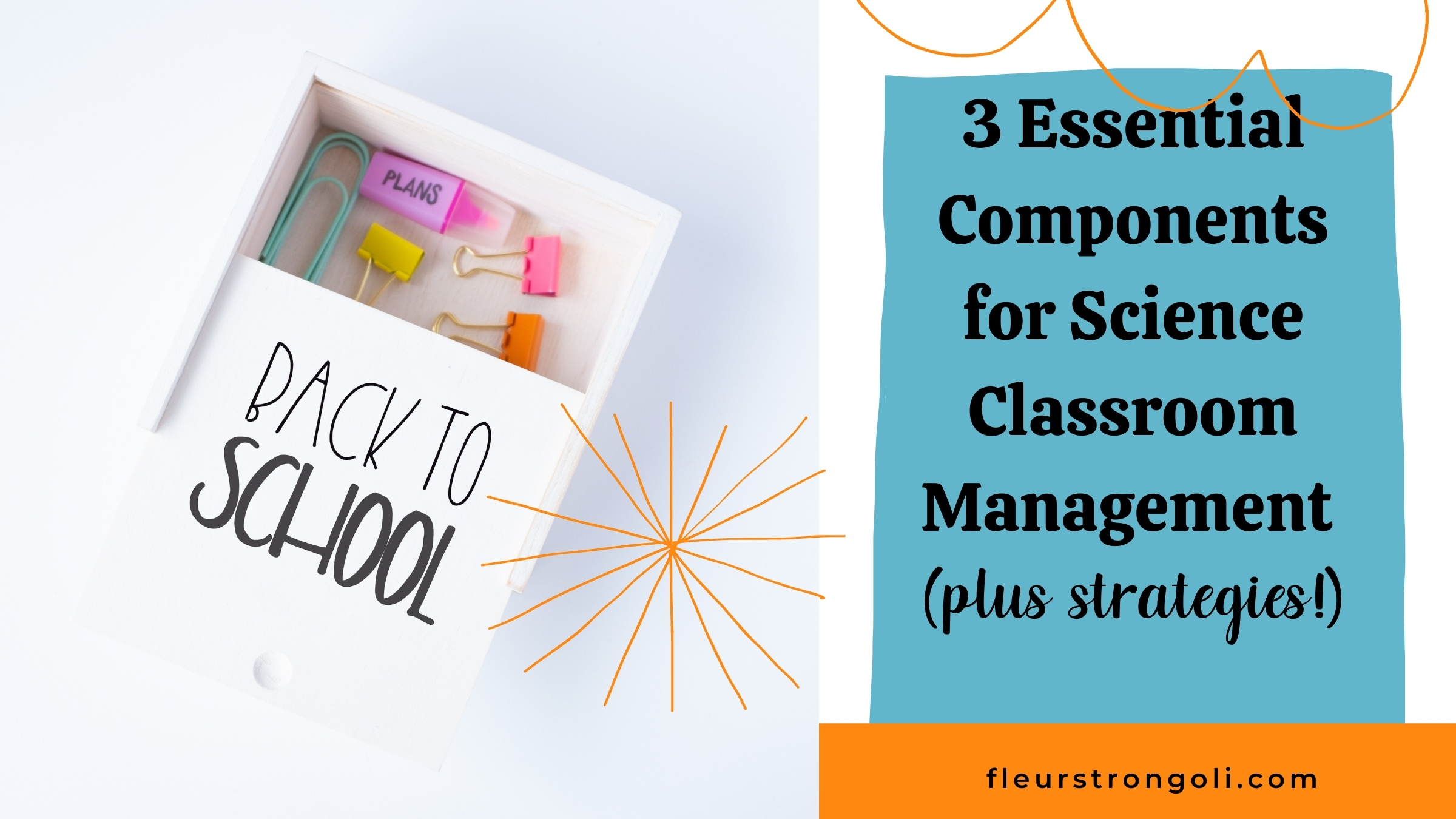




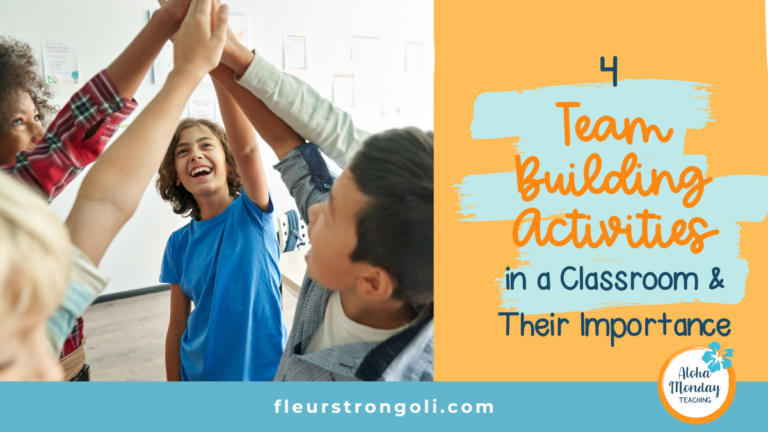
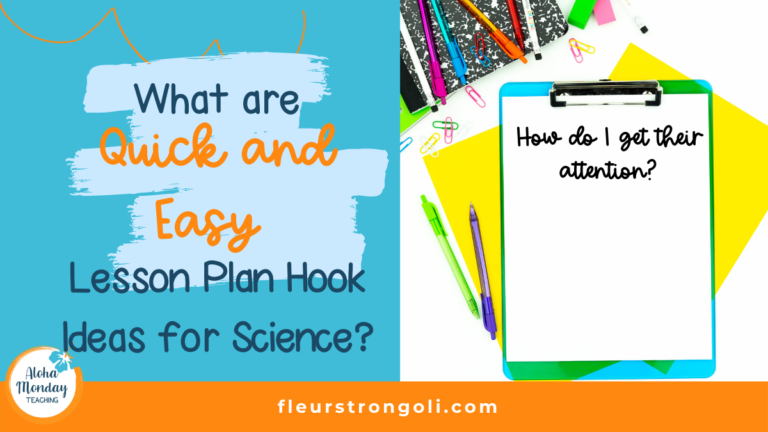
5 Comments